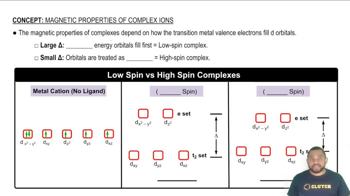Here are the essential concepts you must grasp in order to answer the question correctly.
pH and Acid Dissociation
pH is a measure of the acidity or basicity of a solution, calculated as the negative logarithm of the hydrogen ion concentration. For weak acids like HNO2, the dissociation in water is not complete, and the pH can be determined using the acid dissociation constant (Ka). The extent of dissociation affects the pH, making it crucial to understand how weak acids behave in solution.
Recommended video:
pH of Diprotic Acid Dissociation
Weak Acid Equilibrium
Weak acids do not fully dissociate in solution, establishing an equilibrium between the undissociated acid and its ions. The equilibrium expression involves the concentration of the products (H+ and the conjugate base) and the undissociated acid. This concept is essential for calculating pH and determining when the simplifying assumption of 'x' being small can be applied.
Recommended video:
Assumption of 'x' being small
In weak acid calculations, the assumption that 'x' (the change in concentration due to dissociation) is small simplifies the equilibrium expression. This assumption is valid when the initial concentration of the acid is significantly greater than the dissociated amount. However, at higher concentrations, or when the acid is stronger, this assumption may not hold, necessitating a more precise calculation.
Recommended video:
Low-Spin Complexes are associated with large Δ values and High-Spin Complexes are associated with small Δ values.



